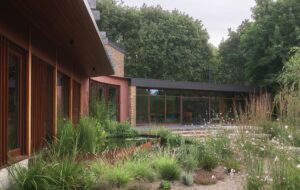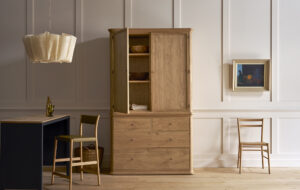
words Johanna Agerman
Robert Stadler hates repetition. He avoids it at any cost and even after 18 years as a designer it is difficult to determine what a “Stadler” is.
He believes that function follows form and strives to find new forms for social interaction, creating furniture as social commentary. His Pentaphone (2006) phone booth provides an escape from the disturbances of modern life, while a piece like Pools & Poufs (2004) comments on the disintegration of “the ideals of the bourgeoisie”, a typically French preoccupation, although Stadler himself is Austrian.
“I never tried to find a stylistic line, I just get bored of that,” says Stadler, introducing his latest collection of work at Galerie Emmanuel Perrotin in Paris. “I always try to focus on the specific project and it’s completely open to me when I start.” But the idea of working in a consistent style does at times appeal to him: “I have some really good friends like Konstantin [Grcic] for example that is the opposite of me, so when I spend time with him I always think ‘God, it must be nice to work like this’.”
Stadler studied at the Instituto Europeo di Design in Milan and came to Paris in the late 1980s to attend École Nationale Supérieure de Creation Industrielle. In 1992 he set up the RADI design collective, but since 2000 he has been working mainly on solo projects.
The new collection, suitably titled Dissipations, is in many ways a perfect example of Stadler’s design – fragmented, inventive and multi-disciplinary. Even within the two small rooms of the exhibition, the pieces have vastly varying styles and materials. It ranges from one-liners like Rest in Peace, a metal chair and table that seems to be slowly eroding, to the more thought-provoking 24H-Tanya. Here the blurry features of a pornstar work as a clock – her mouth telling the hour, her mole the minutes.
The strongest piece in the new collection, both conceptually and in terms of form, is Possible Furniture. It is a series of upholstered furniture based on daybeds, sofas and tables, but with mutated shapes and added functions. The tallest piece makes use of the height of the room with a series of stacked pebble-like objects that create seats and tables on different levels. It looks “chaotic”, in Stadler’s own words, but it works. Behind the randomness of shape it is a fully functional piece. Despite strong concepts, Stadler doesn’t sacrifice functionality. “I make pieces where both the conceptual and the practical aspects are present. It’s important when an object can oscillate between the two, where both dimensions are present at once.”
Stadler is currently occupied with designing a restaurant for the French Hôtel Costes. The first in what is likely to be a chain is due to open in Paris in February. Considering his aversion to repetition, the possibility of a chain worries Stadler. “I’m asking myself, what are the elements that we can use again without stupidly reproducing the same thing?” He thinks that design is over-emphasised in the making of new restaurants and hotels. “I don’t like these places that wherever you turn your head there is an intention. The food should be good and you should be able to relax and talk to your friends, not think about the design.” Perhaps because of his distaste for design overkill, he prefers not to make any grand claims for his own work. “I think part of the statement is not to declare it as a statement. You shouldn’t be sitting in a concept or a manifesto.”
Ultimately Stadler shows both the products he creates and the people that use them a respect that is admirable. He speaks about his designs as if they were people. He creates objects that have to “live” in many different contexts, he prefers products that “seduce” him and he “dresses” a concept in a material. This low-key approach also stretches to his own profile, for better or worse. After nearly 20 years in design, Robert Stadler remains a name that isn’t instantly recognisable.
www.galerieperrotin.com

















